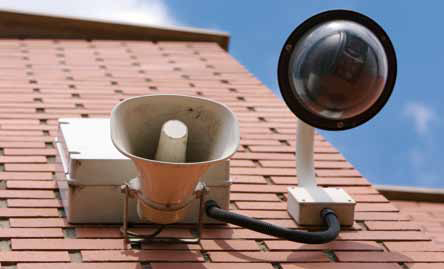 Speed Dome Differentiators
Speed Dome Differentiators
Speed domes do not have the field-of-view limits of fixed domes, as most can pan up to 400 degrees per second. However, being fast is not always a plus. “If you put a dome in a location, set it to patrol and it moves too fast, you cannot capture details,” Yang said.
Considerations include preset accuracy, response to controls,masking and zoom ratios, Pigram said.
The biggest challenges for moving domes are the camera module and power supply. Waterproofing must be noted, as moisture may seep into the power supply and cause failure, or fog up the bubble with droplets, Chang said. Indoor domes may overheat and fail with processors, image sensors and pan-tilt driver units in close proximity, so the dome's construction material should be noted.
Speed domes must have reliable operation, Smith said. Some speed domes enable automatic tracking, which is helpful if an operator is not present. However, possible false alarms make auto-tracking domes suited for less busy scenes.
Motor Motion
 The weakest point in speed and PTZ domes is the pan-tilt driver for accurate positioning, particularly for network domes. “We try to match IP domes to analog speed dome accuracy,” Atsushi said. “A few years ago, no one could achieve it, but now it is nearly the same.”
The weakest point in speed and PTZ domes is the pan-tilt driver for accurate positioning, particularly for network domes. “We try to match IP domes to analog speed dome accuracy,” Atsushi said. “A few years ago, no one could achieve it, but now it is nearly the same.”
Other key criteria for speed domes are the maximum and minimum speeds, along with the number of steps, Crosby said. The acceleration and deceleration curves will affect how quickly the dome moves to maximum speed, slows to minimum speed and when it sets its position. Speed domes should be equipped with a reliable slip ring.
Some countries require privacy masks to be set over homes or sensitive areas. “Privacy zones are also an important consideration, especially for public-space installations where residential units are in close proximity to the areas being monitored,” Smith said.
PTZ Differentiators
PTZ cameras allow for features such as IR illumination. One advantage of the PTZ is the flat glass, Pigram said. “You don't get the distortion and internal reflection that you get from a curved surface.” The flat glass also improves clarity, as wipers can be added.
However, PTZ is not ideal for high-resolution imaging. “The trouble with anything high-resolution is it exaggerates and amplifies the problems you have,” Pigram said. “You have to make that choice if you want a dome or move to a bullet-style camera. If it's a very challenging application at night or you need to see real resolution, you need to take the lens and bubble into consideration.”
Speed domes and PTZ cameras are auto-focus cameras, Atsushi said. Advances in consumer recorders have been adapted to auto-focus lenses for surveillance cameras, keeping images clear despite the changing point of view.